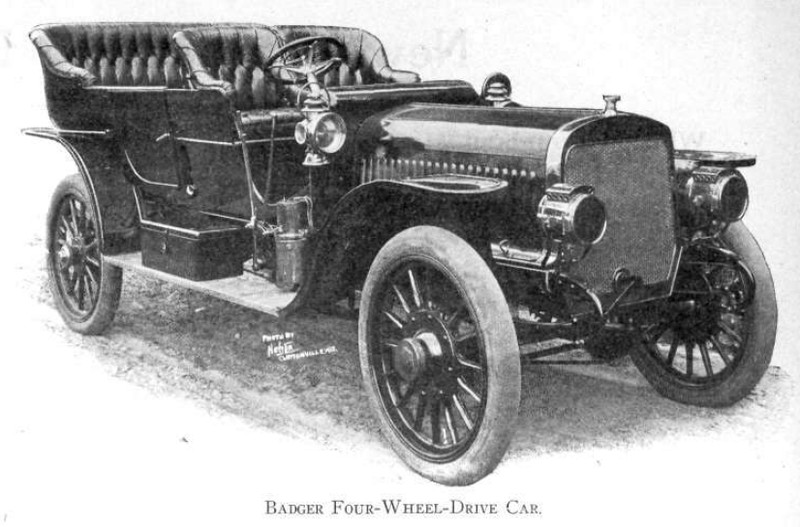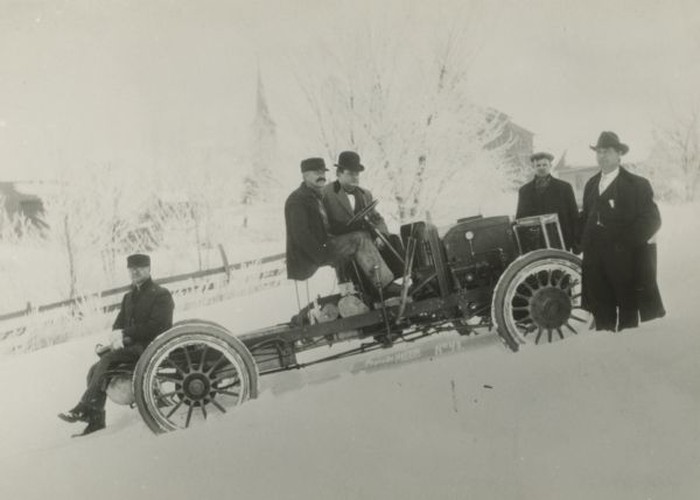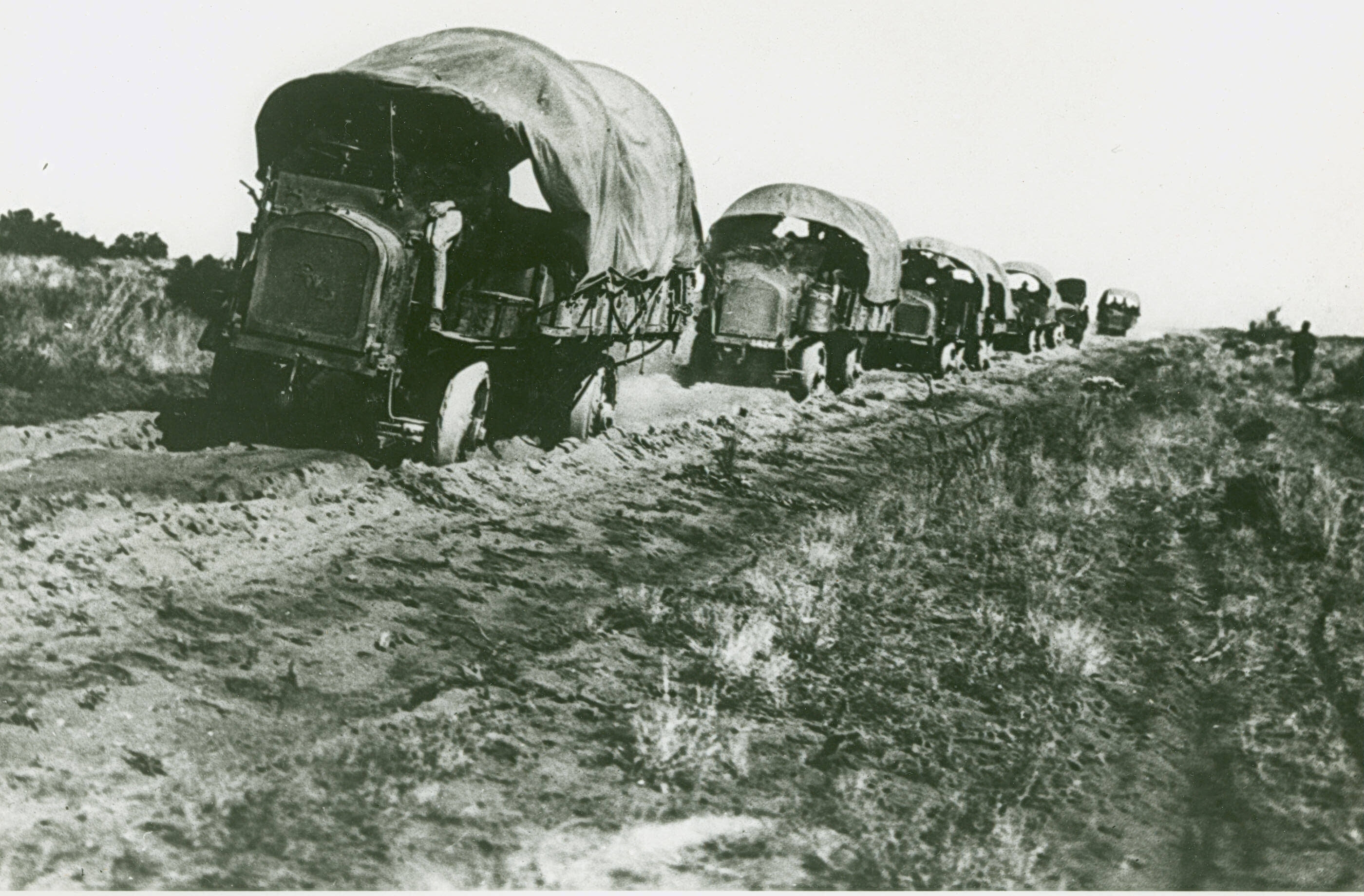Otto Zachow ran a machine shop with his partner and brother-in-law, William Besserdich. Intending to open an automobile sales and repair side to the business, they brought the very first car to Clintonville, population 1,837. Zachow spent a lot of time on the road, thinking he should understand the needs of his future customers. Pretty soon, he was up to his own knees in “research,” and that started Zachow’s creative juices flowing. He is reputed to have said to Besserdich, after a particularly vexing two-wheel-drive predicament, “Who is it who ever heard of a mule walkin’ on just two legs?” The duo then proceeded to design and build a “four-legged” mechanical mule.
When the creative smoke cleared in October of 1908, the skeleton of a four-wheel drive car emerged. It was powered by a cranky steam engine but the four-wheel-drive layout would become the American standard for the next century. It was soon clear steam power wasn’t cutting it but the four-wheel drive worked well. When the car emerged again the following year, it had a curvaceous maroon body and was powered by a 452ci Continental four-cylinder gas engine. It had also gained a corporate home, the Badger Four Wheel Drive Auto Company, as well as a name, Battleship, because nothing could stop it.
 Badger
Badger
|
 Great auto test booster day
Great auto test booster day
|
 Williams on the Scout car
Williams on the Scout car
|
 Alexander Williams
Alexander Williams
|
 FWD company Clintonville Wisconsin
FWD company Clintonville Wisconsin
|
 Loading Truck FWD
Loading Truck FWD
|
In a stroke of luck, FWD was able to demonstrate one of its touring cars to a U.S. Army officer doing research on the military use of motor vehicles. Captain A.E. Williams was impressed and astute enough to know that if the U.S. Army was going to motorize, four-wheel-drive had best be a part of the picture. As a result, FWD sold the army its first 4x4 vehicle in late 1911 for use in a 1912 cross-country test from Washington D.C. to Ft. Benjamin Harrison, Indiana. The army bought a stripped touring car chassis, fitted it with an escort wagon rear body and called it a truck. Loaded with up to 2,000 pounds of gear, it finished that 1,500-mile torture test in 1912, proving the utility of four-wheel drive. Later in 1912, the Scout Car participated in another army test; this time with two of FWD’s newly minted trucks. A variety of truck types were tested in supply roles against horses and mules during actual army maneuvers. Primitive and unreliable as they were, the motor trucks proved themselves superior to the horse-drawn equipment, delivering more cargo and doing it faster. There was still a lot of internal army resistance to motor trucks in 1912, but the wall was weakened and when it was finally breached, FWD was there to build 4x4 army trucks.
Research yields that 12 4x4 touring cars were authorized but only seven are listed as being having been assembled, eight including the Battleship prototype. Besides the Battleship, FWD kept one car, reputedly the last built, first using it as a demonstrator and then as a factory delivery vehicle. Of the other six, two were sold to local private owners, one was configured as a Depot Hack and sold to a Clintonville hotel, one was shipped to Colorado, two went to Chicago, one to Lincoln Park, and the other to the Pinkerton Detective Agency. The fate of these six cars is currently unknown, but the Battleship and that final test car, now called Nancy Hank, are still held by FWD-Seagrave in the Pioneer Park Museum and are in operating condition.
The FWD touring cars weren’t the first 4x4s, nor the first SUVs, but they were the first vehicles in America to show the basic four-wheel-drive layout that would become standard the world over. FWD is still in business, though they’re now building the legendary Seagrave fire trucks, a line FWD acquired in 1963. FWD-badged trucks haven’t been built since the ’90s, but there’s no reason they couldn’t be if demand arose.






